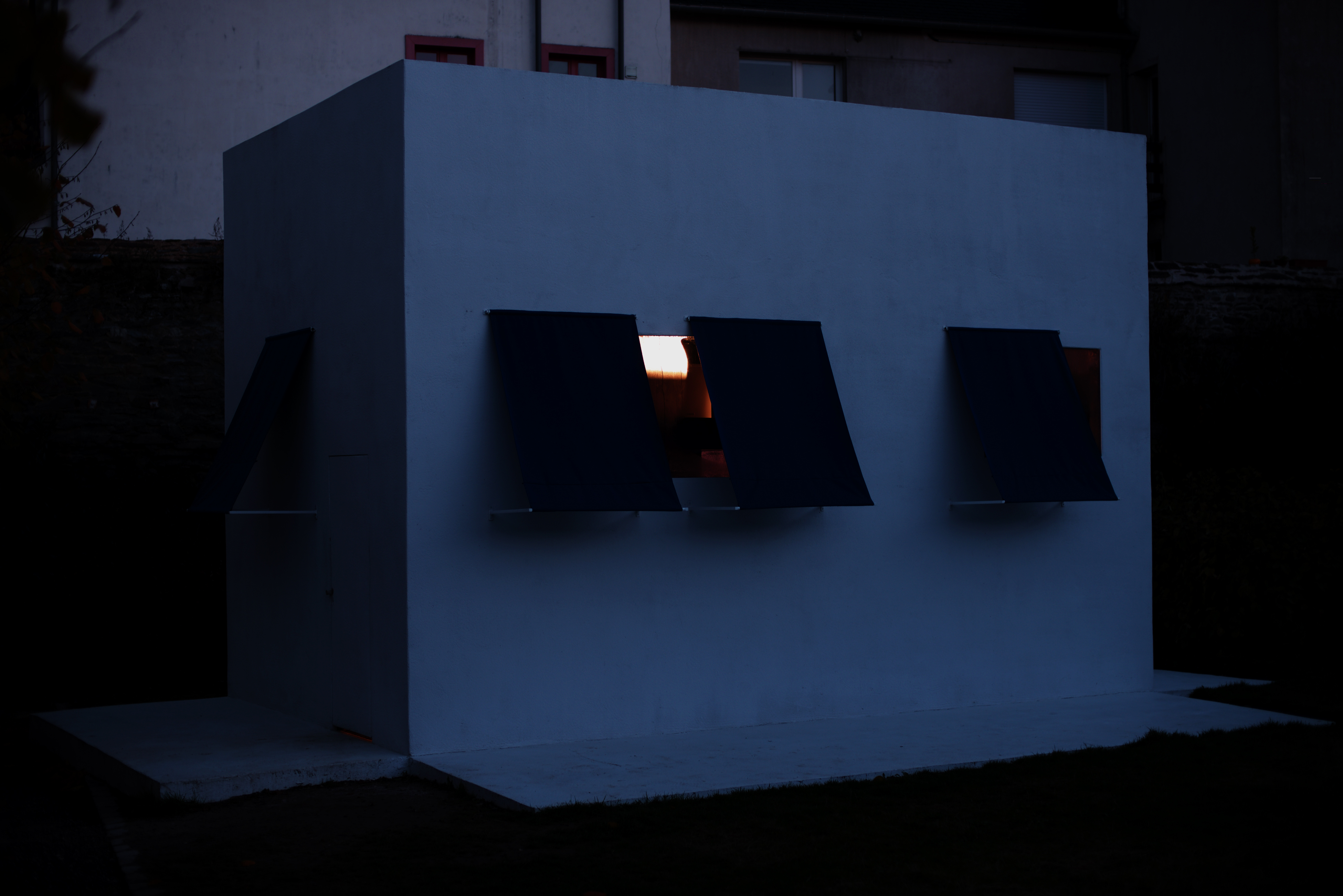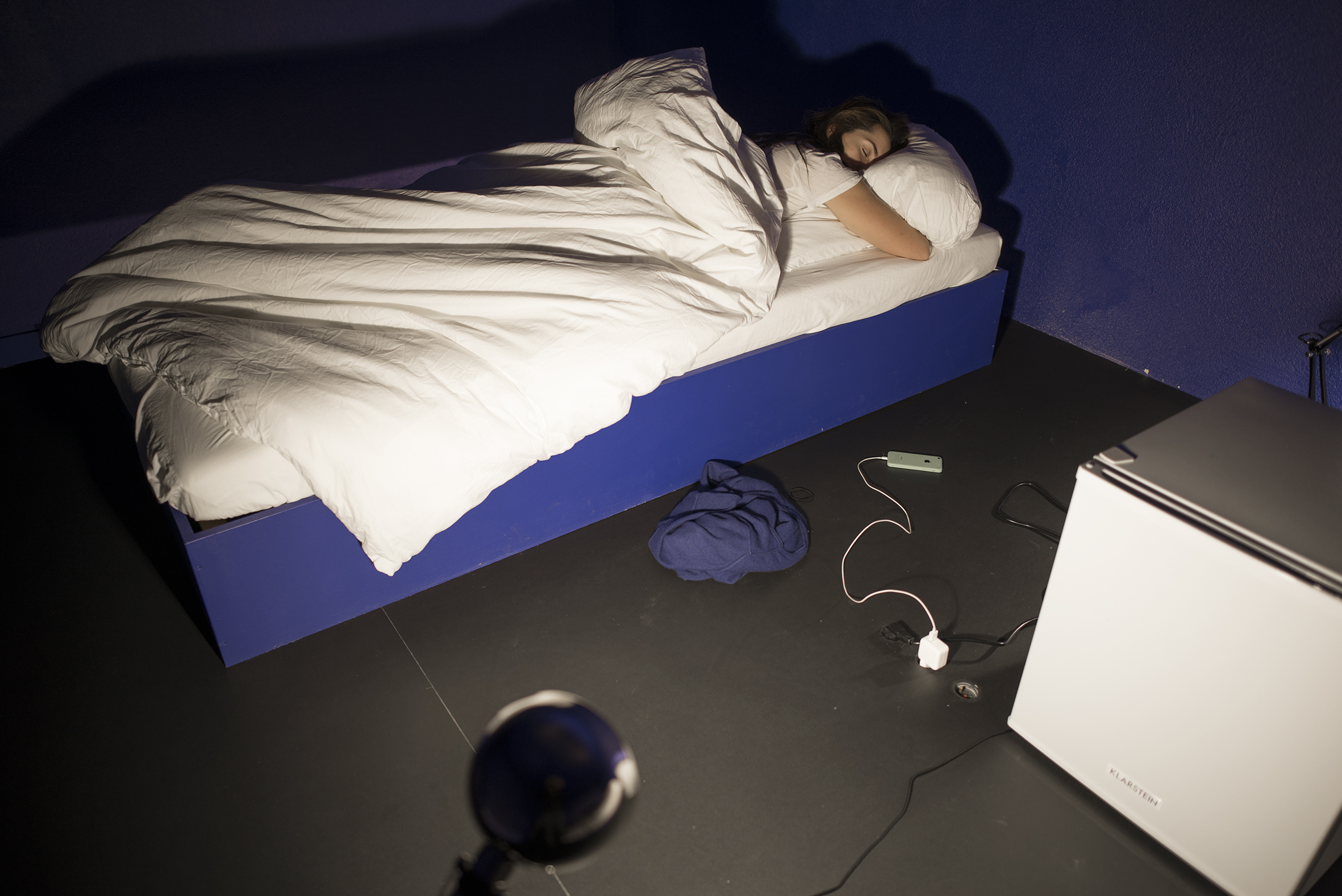
dancers sleeping inside a building
2016
Rennes
Biennale de Rennes /
Musée de la dance
Rennes
Biennale de Rennes /
Musée de la dance
The house is a form of choreography.
From the outside dancers sleeping inside a building recalls an open box turned upside down: a single rectangular volume with three blinds extending horizontally at ground level. While the facade is white (punctuated by four bright blue blinds that do not necessarily correspond to an opening), the interior walls are painted dark blue, creating the artificial night.
The house is divided into two floors by a mezzanine. There three beds, one shower, two fridges put in sequences over the two levels of the building. Inhabitants are encouraged to move about during the night.
The presence of dancers during periods in which they are not performing addresses the debate about their essential being: is a dancer always a dancer, i.e off stage, while eating, taking a shower or sleeping?
While the presence of dancers is essential to the house, their actions are not necessarily visible or observable. There is an effect of blinding by substracting the essential part of the event to the eyes of the public, both spatially behind the walls and diachronically during the night. The inhabitants are both real and implied. Visitors may imagine the life of a dancer inside the house, but the performers are not a spectacle, rather shielding their existence from sight—an effect the placement of the blue awnings reinforces. The architectural layout and the openings, and the placement of furnishings can be read as a proposition for a choreography of possible movements and moments.
With its title’s reference to Trisha Brown’s Man walking down the side of a building, first performed in New York City in 1970, Dancers sleeping inside a building alludes to Brown’s practice of integrating her dancers’ habitus into the performances and of reducing them to individual gestures, while directly confronting the dancer to the building.
Olga Dukhovna, Dimitri Chamblas, Boris Charmatz, Katja Fleig, Latifa Laâbissi, Linda Hayford, Emmanuelle Huynh, Maud Le Pladec, Alain Michard, Thierry Micouin, Léa Rault and Simon Tanguy are the dancers who slept in the house—alone or sometimes with their children—for different lengths of time over a whole period of three months.




















